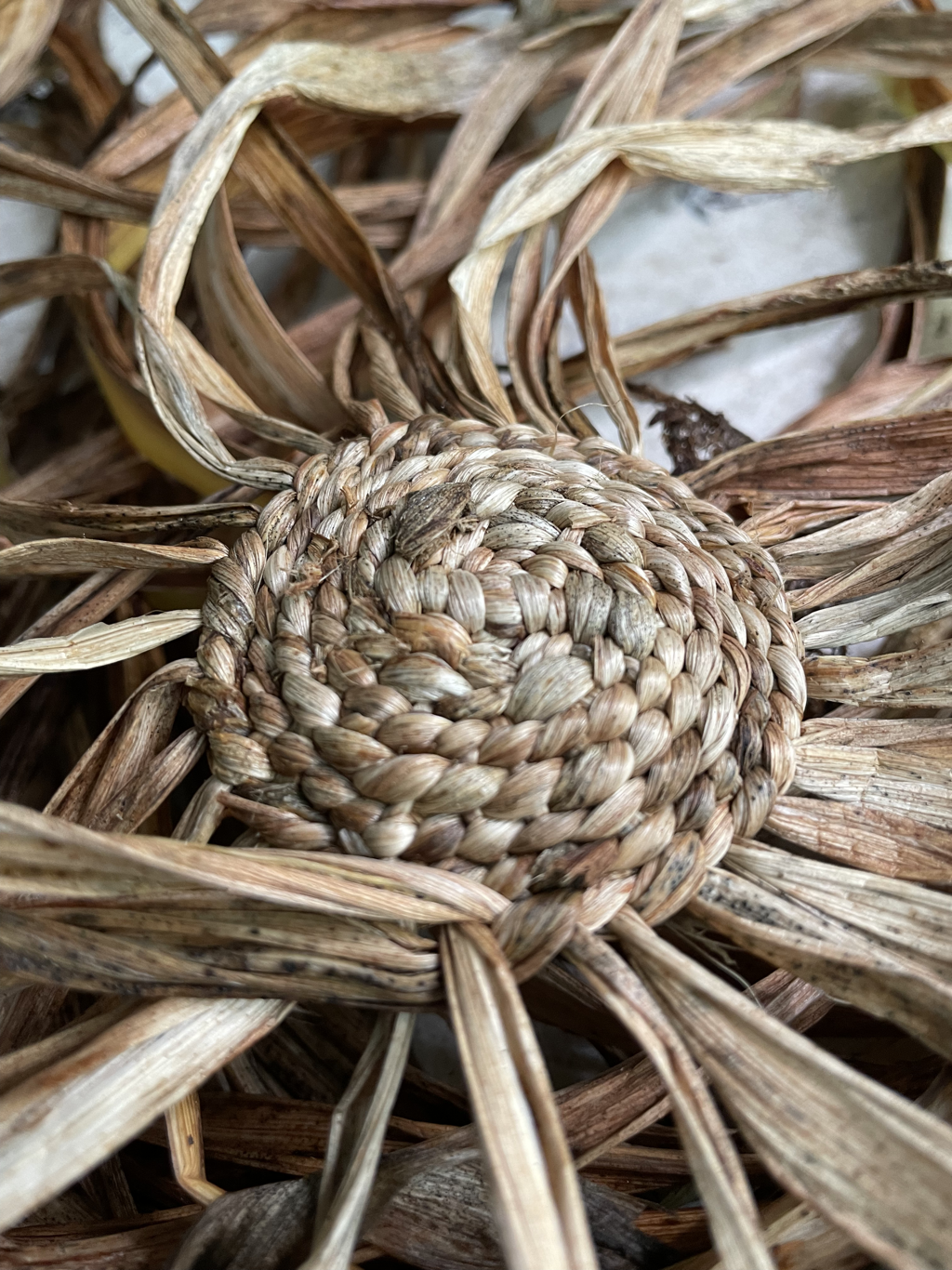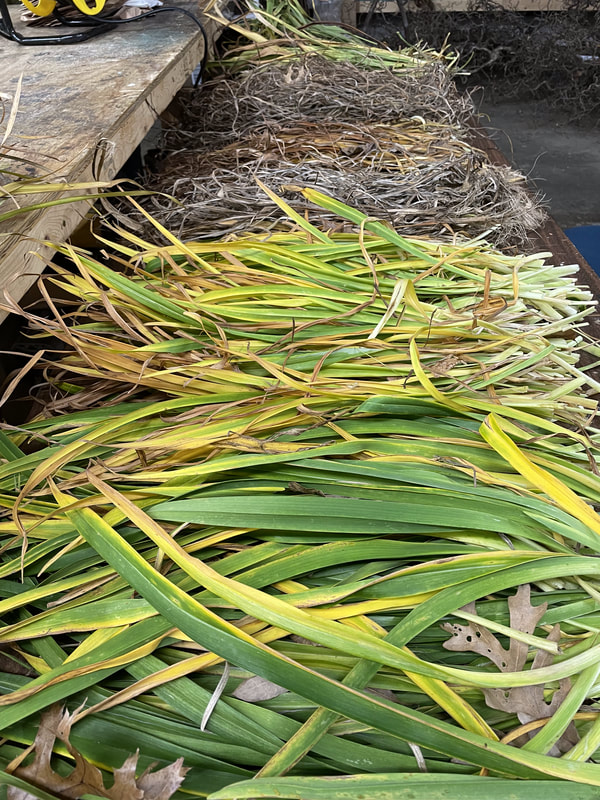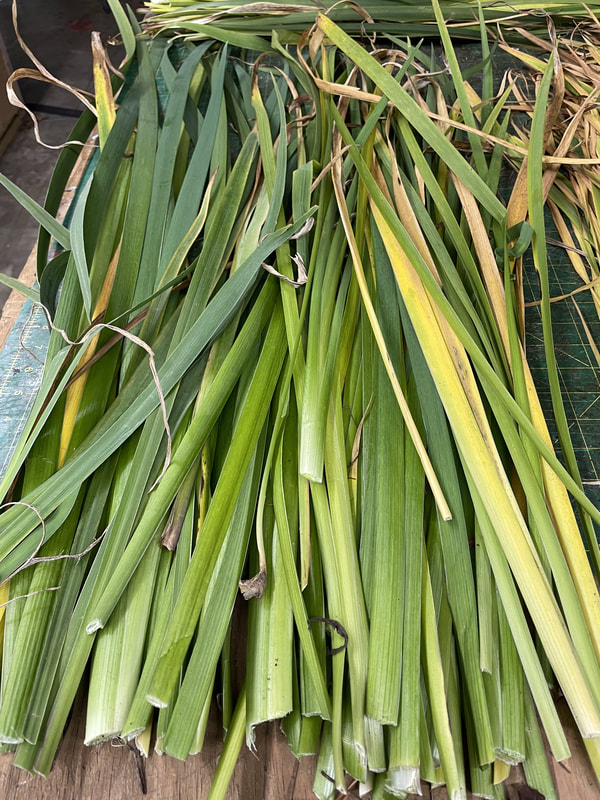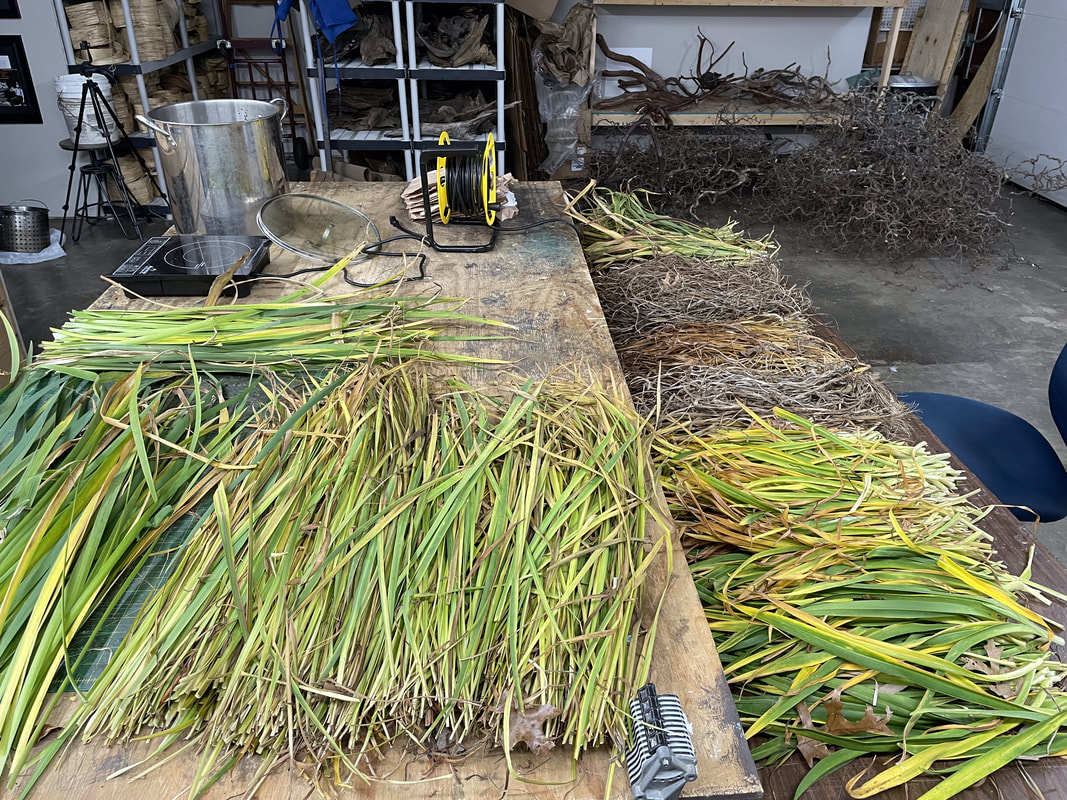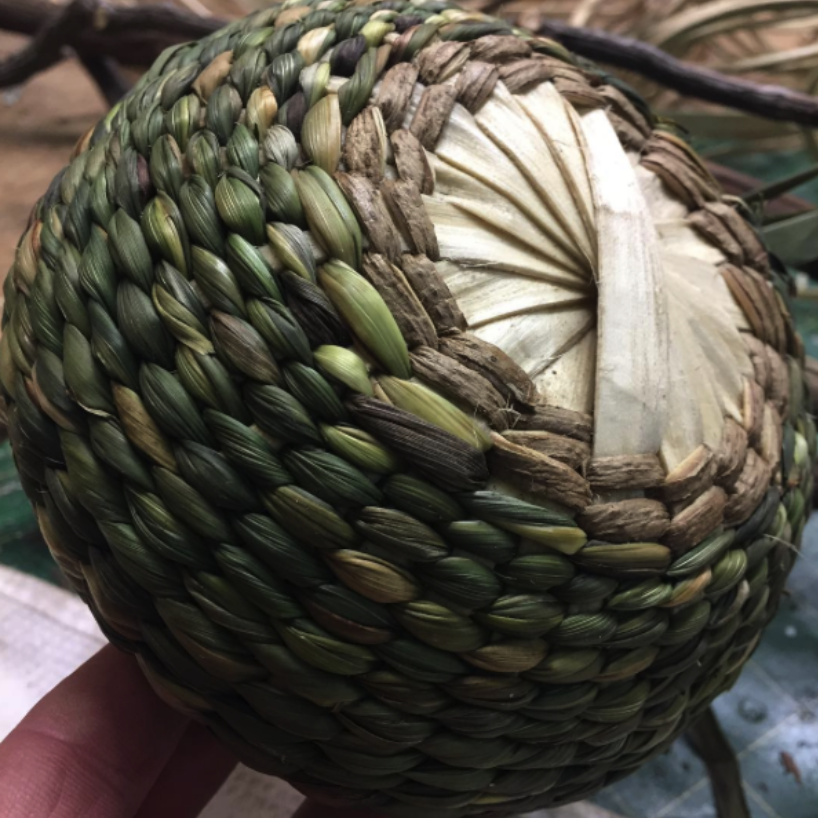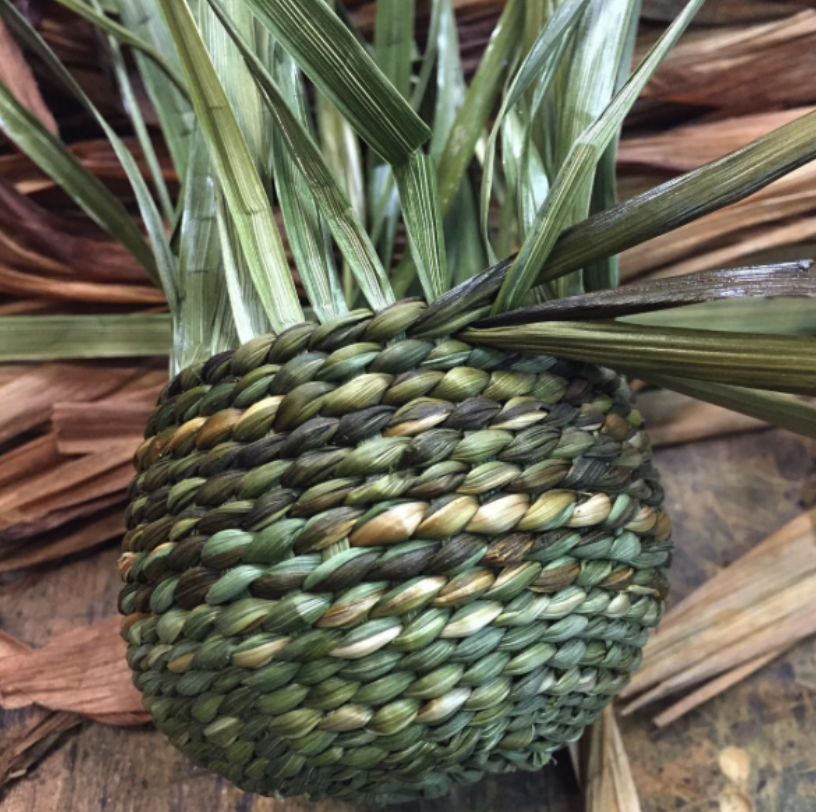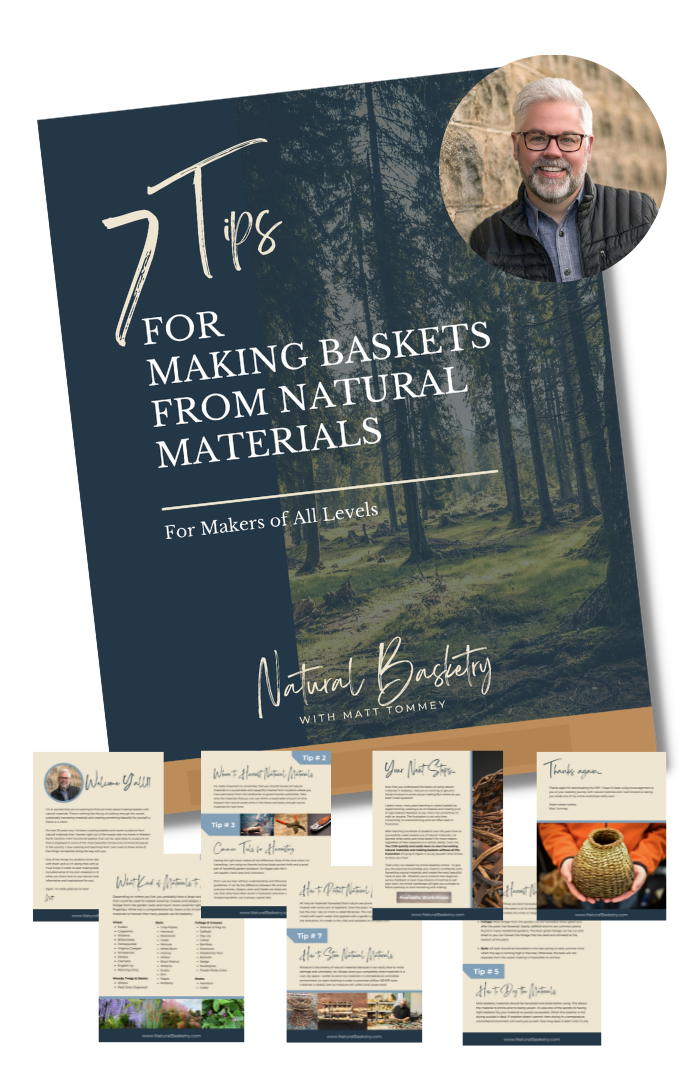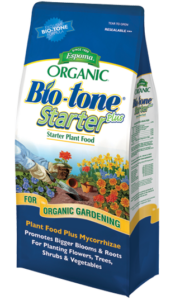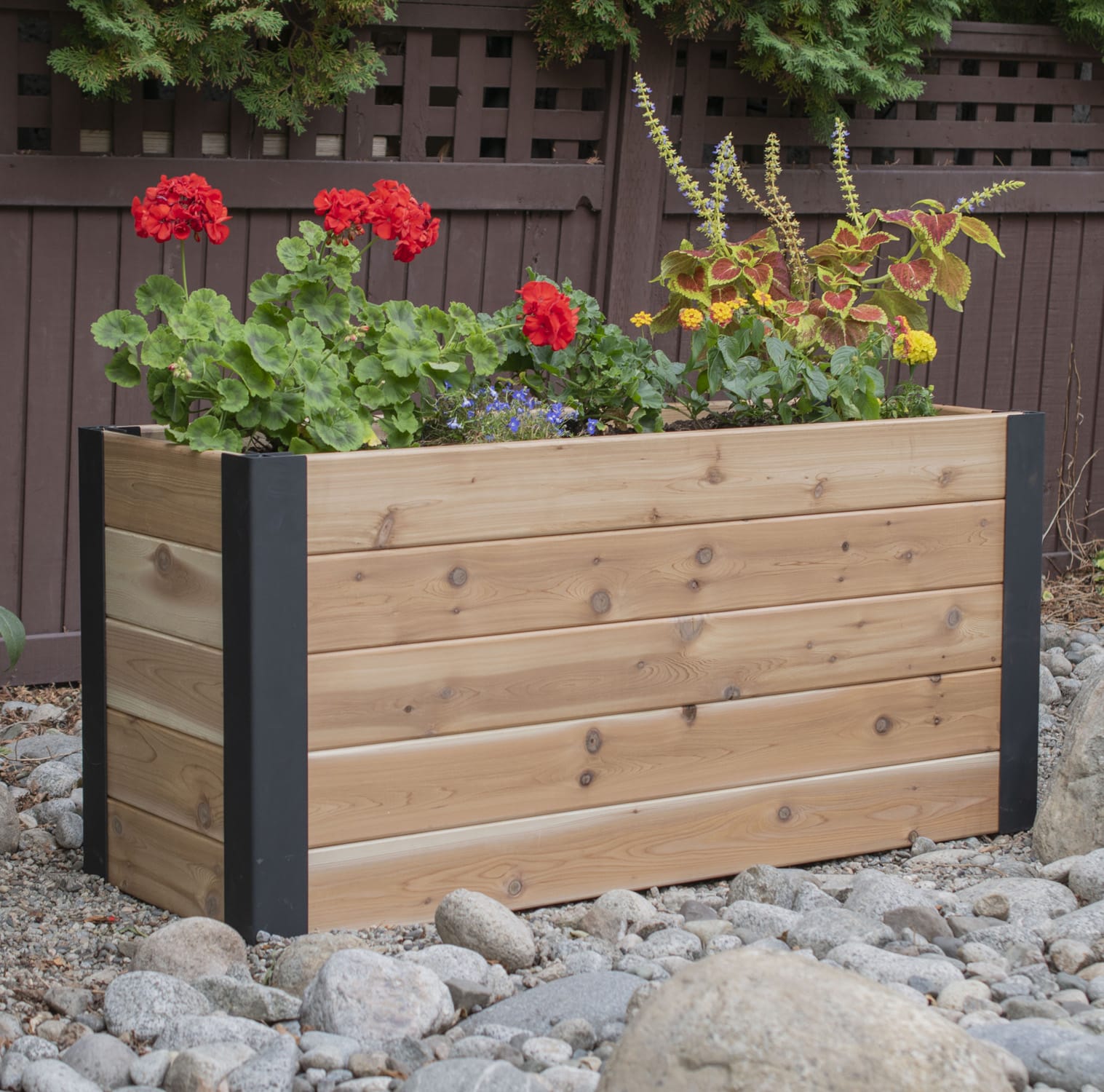Basket base made with naturally wilted day lily foliage.Fall weather brings the changing of colors and seasons. Cool air wisps through the trees, flowers begin to fade, seeds drop for next years blooms and foliage wilts. It can seem...
Fall weather brings the changing of colors and seasons. Cool air wisps through the trees, flowers begin to fade, seeds drop for next years blooms and foliage wilts. It can seem like a really depressing time in the garden, but not for the basketmaker!
While there's little to look forward to in fall garden cleanup, nothing is better than working in the garden on a cool fall day only to stop, gather and weave some daylily foliage. A welcome respite to the mundane nature of pruning and mulching.
**GET MY ONLINE BASKETRY COURSE, Twining with Soft Natural Materials**
Basketry is about so much more than product… it’s the meditative process of creating, an invitation to slow down and listen. And for me, it's always been a bit of an escape from the rushed schedule of daily life. A walk in the woods. The discovery of materials. The adventure of preparation. The unlimited opportunities that lay waiting in the studio with materials so purposefully gathered.
As a professional basketry artist for now approaching 30 years, I can say without question my favorite times weaving are still sitting on the ground, in the garden with fresh materials... no prep, no plan. Just materials and me. It's from that place that my artistic voice has emerged and my commercial work has prospered. People can feel the intent, the love, the purpose in my work and that means everything.
While there's little to look forward to in fall garden cleanup, nothing is better than working in the garden on a cool fall day only to stop, gather and weave some daylily foliage. A welcome respite to the mundane nature of pruning and mulching.
**GET MY ONLINE BASKETRY COURSE, Twining with Soft Natural Materials**
Basketry is about so much more than product… it’s the meditative process of creating, an invitation to slow down and listen. And for me, it's always been a bit of an escape from the rushed schedule of daily life. A walk in the woods. The discovery of materials. The adventure of preparation. The unlimited opportunities that lay waiting in the studio with materials so purposefully gathered.
As a professional basketry artist for now approaching 30 years, I can say without question my favorite times weaving are still sitting on the ground, in the garden with fresh materials... no prep, no plan. Just materials and me. It's from that place that my artistic voice has emerged and my commercial work has prospered. People can feel the intent, the love, the purpose in my work and that means everything.
Harvesting Day Lily Foliage for Basket Weaving
As with most things in art, there's rarely a "right way" to do anything... only the way that works for you. However, over the years I've found that I harvest day lily foliage in two primary ways: collected during the growing season and cut at the end of the season.
When daylily foliage is growing, it's always putting on new growth from the center of the plant, and pushing the old foliage down to the sides. Eventually, that foliage dries, wilts and dies while still connected to the plant. It doesn't look great and it's best to remove it so as to give your plant "breathing room." This foliage, in my opinion, is the best for weaving. Nothing beats the preparation nature provides in the natural wilting process. Once you harvest these, simply let them dry completely and then store in a cool, dry place until ready to use.
You can also cut day lily foliage at the end of the growing season. I usually wait until the first frost so it begins to wilt and yellow but doesn't ruin. Again, let it dry completely in a cool, dry place and then store until ready for usage.
You'll notice that different varieties of daylily (and iris) have different kinds of foliage. Some are longer and fatter than others. Of course, being a basket maker, I choose my flowers by the length of foliage they provide, long being best.
When daylily foliage is growing, it's always putting on new growth from the center of the plant, and pushing the old foliage down to the sides. Eventually, that foliage dries, wilts and dies while still connected to the plant. It doesn't look great and it's best to remove it so as to give your plant "breathing room." This foliage, in my opinion, is the best for weaving. Nothing beats the preparation nature provides in the natural wilting process. Once you harvest these, simply let them dry completely and then store in a cool, dry place until ready to use.
You can also cut day lily foliage at the end of the growing season. I usually wait until the first frost so it begins to wilt and yellow but doesn't ruin. Again, let it dry completely in a cool, dry place and then store until ready for usage.
You'll notice that different varieties of daylily (and iris) have different kinds of foliage. Some are longer and fatter than others. Of course, being a basket maker, I choose my flowers by the length of foliage they provide, long being best.
Other Foliage for basket weaving
Just because I'm talking about day lily and iris foliage doesn't mean you can't use other foliage available in the garden. Some of my other favorites include daffodil (usually harvested in the spring after blooming, giving the plant a few weeks to rest and begin to wilt.) Also other common plants like red hot poker, crocosmia and many others. Daffodil sap in particular can be irritating to the skin, so be careful as you harvest. Wear gloves, long sleeves, avoid touching your face and be sure to wash up thoroughly after harvesting.
Enjoy the season and take time to walk through your garden to harvest materials for basket weaving. For more on harvesting natural materials, be sure to download my free PDF 7 Tips for Harvesting Natural Materials.



